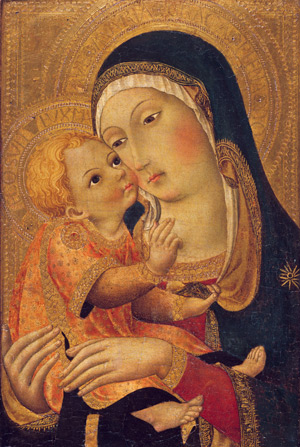The season of Advent is in full swing, and the rhythm of our domestic churches hums with joy-filled anticipation of the Christ Child.

Advent is a time of spiritual preparation. It’s a time to center our hearts and minds so that we can enter fully into the celebration of Christmas, with its promise of eternal salvation.
Our understanding of Christmas changes when we think of the birth of Christ in terms of the mystery of the Incarnation.
“These four weeks are meant to give us time to prepare for the mystery; the incredibly loving, awe-inspiring mystery that God so loved the world that He would give us His only begotten Son,” said Ryan Hanning, director of parish leadership support for the Diocese of Phoenix.
Advent challenges faithful Christians to think differently and act differently. Just as the exterior of our homes look different covered with strands of bright, twinkly lights and inflatable snowmen, so must the interior of our hearts look different.
Praying as families, reading the Sunday Gospels, blessing and lighting an Advent wreath and going to Mass are all ways that transform us from the inside out.
“We should be ones waiting with expectant hope. The expectant joy that we held, sometimes painfully, to open gifts as children on Christmas morning,” Hanning said. “This is the type of spiritual angst we should have as adults who are waiting to celebrate Christmas and the reality that Jesus will come again.”
At sundown on Dec. 24, Advent ends and we begin the Christmas season. Contrary to radio stations and shopping malls, Christmas doesn’t start the day after Thanksgiving.
In fact, it’s not even one day. Christmas is a season where we enter the reality that the birth of Jesus fulfilled ancient prophecy that God would send a Messiah to save all humanity.
“Our Church helps us approach the Nativity of our Lord with immense reverence by giving us the beautiful season of Advent,” said Sr. Tara Smith, a postulant of the Poor Clare Sisters of Perpetual Adoration in Tonopah. “In Advent we are groaning, along with the Hebrew people of the Old Testament, and preparing for our Messiah whose birth we celebrate on Christmas.”
Technically, the Octave of Christmas is from Christmas to the Solemnity of Mary on Jan. 1, or traditionally from Christmas through Jan. 5.
Liturgically speaking, the Christmas season lasts until the Feast of the Baptism of the Lord, and it’s filled with rich traditions and wonderful feasts.
The five major feasts of the Christmas Season are: the Solemnity of the Nativity of the Lord; the Feast of the Holy Family of Jesus, Mary, and Joseph; the Solemnity of Mary, the Holy Mother of God; the Solemnity of the Epiphany of the Lord; and the Feast of the Baptism of the Lord.
Family Christmas customs range vastly, but by putting the season into its proper place in the calendar, the month reveals additional ways to adore and welcome Emmanuel, “God is with us.”
“It is a time of joy, of family, of love, of festivities,” said Sr. Marie St. Paul, PCPA. “Putting up Christmas trees and singing Christmas songs does not take us away, but enhances and celebrates even more the love of our Lord who became man for us. We are an incarnational people.”
The 12 days of Christmas refers to Dec. 25-Jan. 6, The Feast of Epiphany. A poignant tradition for families that prepared and longed for the birth of Jesus, and continue to wait with joyful hope for His return, is the enthroning of the Christ Child on Christmas day.
Families can gather in a room and process baby Jesus to the crèche with songs and a family prayer.
The following day, Dec. 26, is the Feast of St. Stephen, the first deacon of the Church. Day three, Dec. 27, is the Feast of St. John the Evangelist, and so it continues until the Wise Men arrive with gifts of gold, frankincense and myrrh.
Dave and Marnie Maza, parishioners of Our Lady of Mount Carmel in Tempe, help their five children focus on Jesus by preparing a bed of straw for His manger in the crèche.
“To do this we present the children with one piece of straw for every good deed they do during Advent,” Marnie said. “We add these to our nativity scene and on Christmas Eve, baby Jesus is laid in his manger. The promise of Christmas is the Good News of the Gospel, which is our salvation.”
As Catholics, we bear witness to the authentic celebration of Christmas, and focus less on the temporal. However, not all is lost with the world’s view of mall Santas, holiday lights, shoppers and 50 percent discounts.
“It could be just a cold day in December,” said Fr. Doug Lorig, pastor of St. Maria Goretti Church in Scottsdale. “So the secular world does a secular celebration, but packaged inside those things, the Holy Spirit is able to reach people who may never darken the door of a church.”
Fr. Lorig called Christmas an “annual renewal,” with the weeks preceding the season a time of preparation to celebrate it well with our whole hearts.
“It’s when love came down and love stayed unto the end,” Fr. Lorig said. “Our response is to learn to love like that.”





